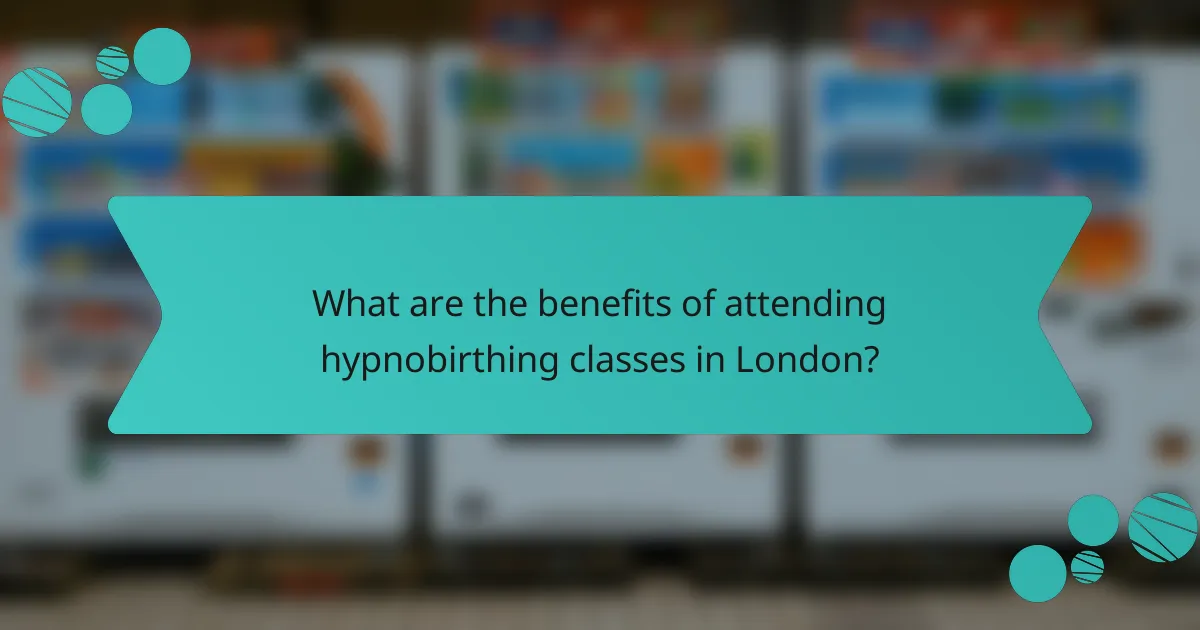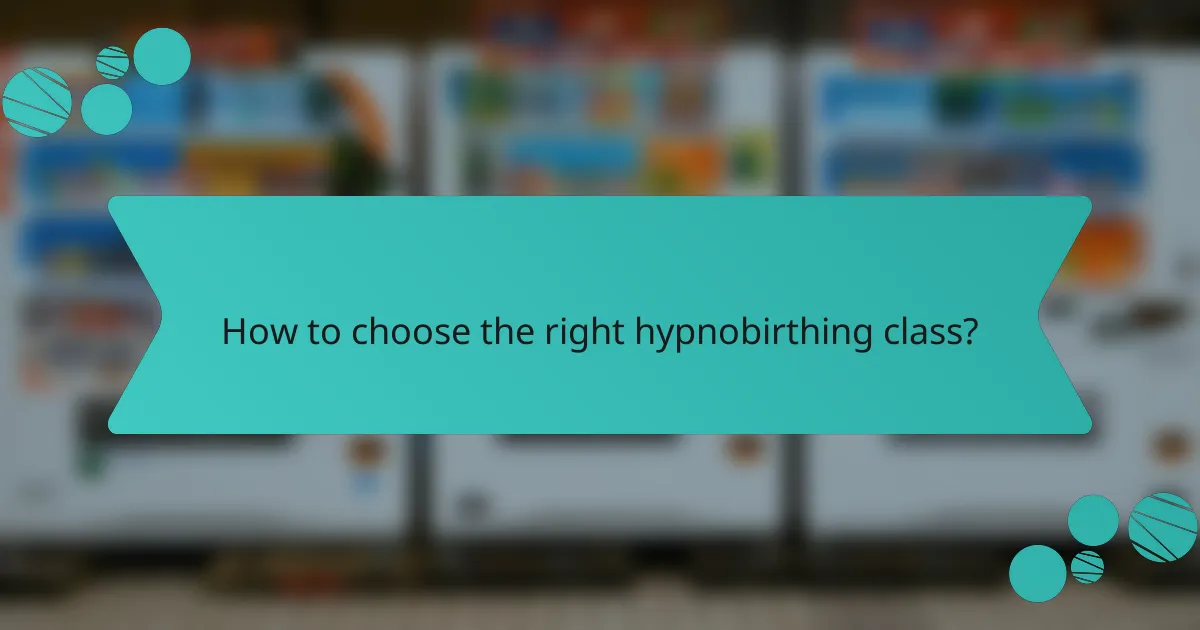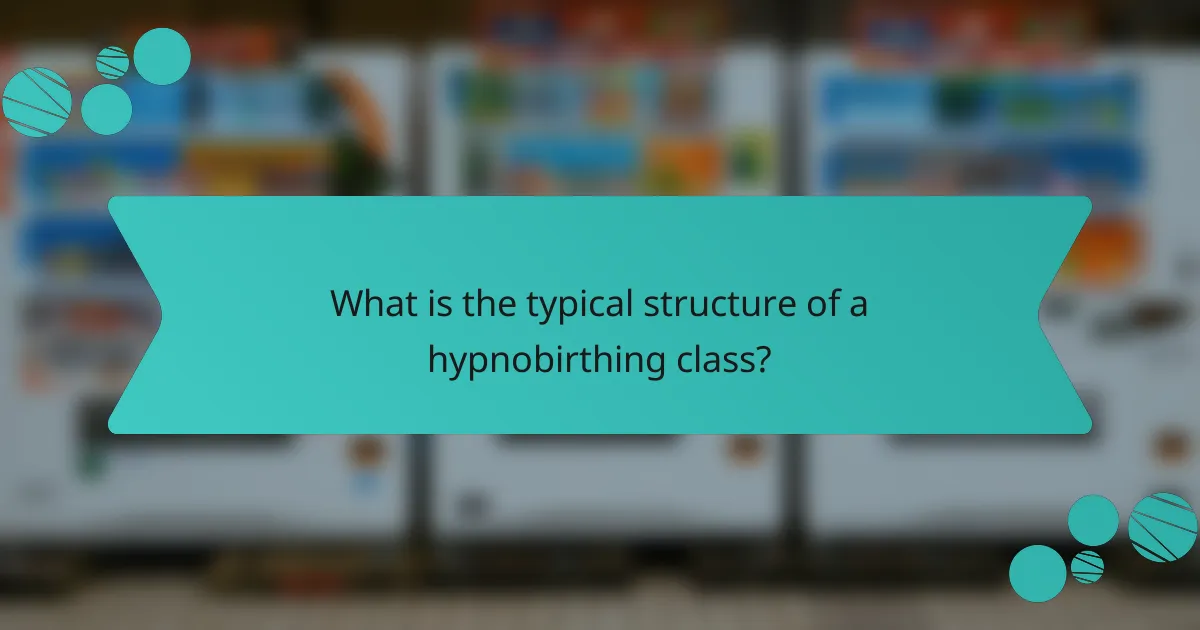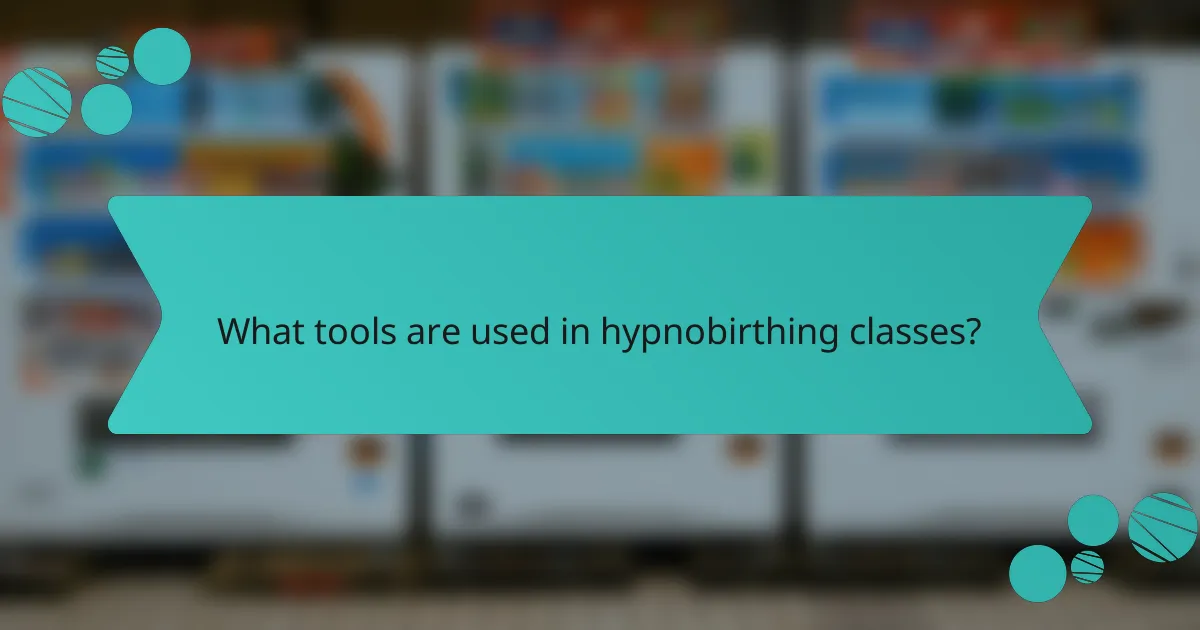Hypnobirthing classes provide expectant mothers with effective relaxation techniques and self-hypnosis methods to reduce anxiety and foster a calm mindset during pregnancy and labor. By learning to manage fears and stress, participants can experience a more positive and empowering birthing experience.

How do hypnobirthing classes reduce anxiety in expectant mothers?
Hypnobirthing classes effectively reduce anxiety in expectant mothers by teaching relaxation techniques and self-hypnosis methods. These practices empower women to manage their fears and stress, fostering a calm mindset during pregnancy and labor.
Mindfulness techniques
Mindfulness techniques in hypnobirthing focus on being present and aware of one’s thoughts and feelings without judgment. Practices such as body scans and mindful observation help mothers connect with their bodies and emotions, reducing anxiety levels.
Incorporating mindfulness into daily routines can be as simple as spending a few minutes each day in quiet reflection or focusing on the sensations of breathing. This consistent practice can lead to significant improvements in emotional well-being.
Breathing exercises
Breathing exercises are central to hypnobirthing, as they promote relaxation and help manage pain during labor. Techniques like deep abdominal breathing and rhythmic breathing can lower heart rates and reduce tension, allowing mothers to feel more in control.
Practicing these exercises regularly can enhance their effectiveness. Expectant mothers are encouraged to dedicate time each day to practice breathing techniques, ensuring they become second nature during labor.
Visualization practices
Visualization practices involve creating mental images of a calm and positive birthing experience. This technique helps mothers to focus on their desired outcomes, reducing anxiety and fostering a sense of empowerment.
To utilize visualization effectively, mothers can spend time imagining themselves in a serene environment, feeling relaxed and confident. Regular practice can enhance the clarity of these mental images, making them more impactful during labor.

What relaxation techniques are taught in hypnobirthing classes?
Hypnobirthing classes teach various relaxation techniques designed to reduce anxiety and promote a calm birthing experience. These methods focus on mental and physical relaxation to help expectant mothers manage pain and stress during labor.
Progressive muscle relaxation
Progressive muscle relaxation (PMR) involves systematically tensing and then relaxing different muscle groups in the body. This technique helps to identify and release tension, promoting overall relaxation. Expectant mothers can practice PMR by starting from their toes and working up to their head, spending a few moments on each muscle group.
To effectively use PMR, find a quiet space and focus on your breathing. Tense each muscle group for a few seconds before releasing, and notice the difference in sensation. Regular practice can enhance the ability to relax during labor.
Self-hypnosis methods
Self-hypnosis techniques in hypnobirthing involve guiding oneself into a deeply relaxed state through visualization and affirmations. This method helps to create a positive mindset and reduce fear associated with childbirth. Expectant mothers can use scripts or recordings to facilitate their self-hypnosis practice.
To implement self-hypnosis, choose a comfortable position and focus on calming imagery or soothing phrases. Regular practice can help reinforce a sense of control and calmness during labor. It’s beneficial to integrate these techniques into daily routines leading up to the birth.

What are the benefits of attending hypnobirthing classes in London?
Attending hypnobirthing classes in London offers numerous advantages, including relaxation techniques that help reduce anxiety during childbirth. These classes equip expectant parents with self-hypnosis skills, promoting a calmer and more positive birth experience.
Improved birth experience
Hypnobirthing classes focus on relaxation and visualization techniques that can significantly enhance the overall birth experience. By learning to manage pain and anxiety through self-hypnosis, many parents report feeling more in control and less fearful during labor.
Techniques such as deep breathing and positive affirmations can lead to shorter labor times and reduced need for medical interventions. Expectant parents often find that these methods help them remain calm and focused, contributing to a more satisfying birth outcome.
Enhanced partner involvement
Hypnobirthing classes encourage active participation from partners, fostering a supportive environment during labor. Partners learn how to assist with relaxation techniques, which can strengthen their bond and improve communication throughout the birthing process.
By being involved, partners can provide emotional and physical support, helping to create a more positive atmosphere. This involvement not only benefits the birthing person but also allows partners to feel more connected and engaged in the experience of welcoming their child.

How to choose the right hypnobirthing class?
Choosing the right hypnobirthing class involves evaluating the instructor’s qualifications, the class size, and the format that best suits your needs. Consider what aspects of hypnobirthing you want to focus on, such as relaxation techniques or self-hypnosis, and how these elements are delivered in the class.
Instructor qualifications
When selecting a hypnobirthing class, the instructor’s qualifications are crucial. Look for instructors who are certified in hypnobirthing techniques and have experience in childbirth education. Many reputable instructors will have completed specific training programs recognized by organizations like the HypnoBirthing Institute.
Additionally, consider the instructor’s background in related fields such as psychology, nursing, or midwifery. This can enhance their ability to address both the emotional and physical aspects of childbirth, providing a more comprehensive learning experience.
Class size and format
The size and format of the class can significantly impact your learning experience. Smaller classes, typically with 5-10 participants, allow for more personalized attention and interaction with the instructor. In contrast, larger classes may offer a broader range of perspectives but less individual support.
Class formats can vary from in-person sessions to online courses. In-person classes often foster a sense of community and allow for hands-on practice, while online classes provide flexibility and convenience. Assess your comfort level with each format and choose one that aligns with your learning style and schedule.

What is the typical structure of a hypnobirthing class?
A typical hypnobirthing class is structured to guide expectant parents through relaxation techniques, anxiety reduction, and self-hypnosis practices. Classes usually combine theoretical knowledge with practical exercises to help participants feel more prepared for childbirth.
Session duration
Most hypnobirthing classes last between 2 to 3 hours per session. Depending on the program, classes may span several weeks, often totaling around 5 to 6 sessions. This duration allows for in-depth exploration of techniques and ample practice time.
Content overview
Hypnobirthing classes typically cover a range of topics, including the physiology of childbirth, relaxation techniques, and the use of self-hypnosis. Participants learn breathing methods, visualization exercises, and affirmations that can help reduce anxiety and promote calmness during labor.
In addition to practical exercises, classes often include discussions on the emotional aspects of childbirth, partner involvement, and creating a supportive birth environment. Some programs may also provide resources such as handouts or access to online materials for further learning.

What tools are used in hypnobirthing classes?
Hypnobirthing classes utilize various tools designed to promote relaxation, reduce anxiety, and teach self-hypnosis techniques. These tools help expectant parents manage the birthing process more comfortably and confidently.
Audio recordings
Audio recordings are a fundamental tool in hypnobirthing classes, often featuring soothing music, guided meditations, or affirmations. These recordings can help create a calming environment and are typically used during practice sessions at home.
Expectant parents are encouraged to listen to these recordings regularly, ideally daily, to reinforce relaxation techniques and build familiarity with the self-hypnosis process. Many recordings are available in various formats, including digital downloads and streaming services.
Guided imagery scripts
Guided imagery scripts are another essential component of hypnobirthing, providing verbal instructions that lead individuals through visualization exercises. These scripts help participants imagine a peaceful birthing experience, focusing on positive outcomes and relaxation.
Practicing with guided imagery can enhance the effectiveness of self-hypnosis, making it easier to enter a relaxed state during labor. Many hypnobirthing classes provide printed or digital copies of these scripts for ongoing practice at home.
